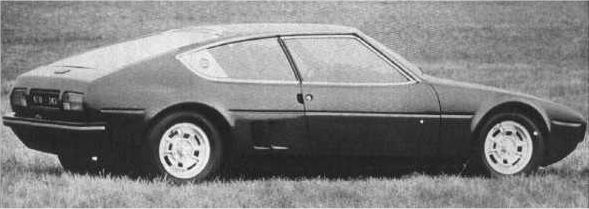Description
The Matra Bagheera U8 was one of the most remarkable and daring engineering experiments ever undertaken by Matra. Built in 1974–1975 as a high-performance prototype based on the standard Bagheera, it explored the limits of what Matra’s mid-engined sports coupé platform could achieve. Instead of designing a larger engine, the engineering team pursued a uniquely inventive solution: they mounted two Simca 1.3-litre four-cylinder engines side by side and mechanically linked them to operate as a single eight-cylinder unit. The result was a compact, innovative, and impressively powerful mid-engine sports car that has since become one of the most fascinating curiosities in French automotive history.
The Bagheera U8 project was developed internally by Matra engineers Bernard Boyer and Philippe Guédon, who faced a straightforward challenge: the Bagheera chassis simply did not have space for a larger single-block engine. Instead of compromising the mid-engined layout, they conceived an unprecedented “U-type” engine composed of two Simca 1,294 cc fours sharing a common flywheel and linked through a special gearing system. Although each engine retained its own carburation, ignition and ancillary equipment, they operated together as one smooth, free-revving eight-cylinder unit. The combined displacement of 2.6 litres produced around 168 horsepower, a dramatic improvement over the standard Bagheera.
Accommodating this wide, twin-engine assembly required a widened engine bay, reinforced chassis and upgraded cooling system, yet the prototype remained surprisingly true to the original Bagheera silhouette. The lightweight polyester bodywork and compact mechanical layout kept overall weight manageable. Beneath the surface, the familiar steel monocoque backbone still defined the car’s structure, and the basic independent suspension system remained, albeit with strengthened components to handle the increased power and speed.
Performance was far beyond what anyone expected from a Bagheera. The U8 could reach around 220 km/h, making it faster than many contemporary six-cylinder GT cars and significantly more capable than the production Bagheera. Acceleration felt vigorous, and high-speed stability benefited from the car’s mid-engined balance and low centre of gravity. The exhaust note was especially distinctive, combining the rhythm of two four-cylinder engines into a unique multi-pulse sound that gave the prototype a character entirely its own.
Visually, the U8 looked similar to the standard early Bagheera, though it featured wider cooling intakes at the rear and was typically finished in bold colours such as bright yellow with contrasting black elements. Inside, the three-across seating remained unchanged, preserving the Bagheera’s unusual but practical layout. The prototype retained most of the standard interior, though additional instrumentation and monitoring equipment were added for testing during development.
Although the U8 performed impressively, the project was never seriously considered for mass production. The dual-engine system, though clever, was too complex and costly for a mid-priced sports car. Concerns also arose about maintenance, reliability perception and the ability of the Simca marketing network to support such an unconventional machine. Moreover, the mid-1970s fuel crisis made the prospect of launching a more powerful and less economical version commercially difficult. Corporate changes — including Peugeot’s takeover of Chrysler Europe — shifted Simca’s priorities firmly toward economy and practicality rather than high-performance development.
Only a very small number of Bagheera U8 prototypes were completed, generally believed to consist of two fully assembled cars and several test engines. One surviving example is preserved in the Musée Matra in Romorantin, where it stands as a testament to the company’s spirit of innovation and its willingness to challenge technical conventions.
Today, the Matra Bagheera U8 is remembered as one of the most intriguing experimental vehicles of the 1970s — a bold demonstration of what Matra’s agile engineering team could achieve when unconstrained by commercial limitations. The combination of twin-engine ingenuity, lightweight mid-engine chassis and distinctive Bagheera styling gives the U8 an enduring mystique. It remains a symbol of Matra’s fearless creativity and serves as a captivating glimpse into an alternate future where the Bagheera might have become a genuine high-performance French sports car.
